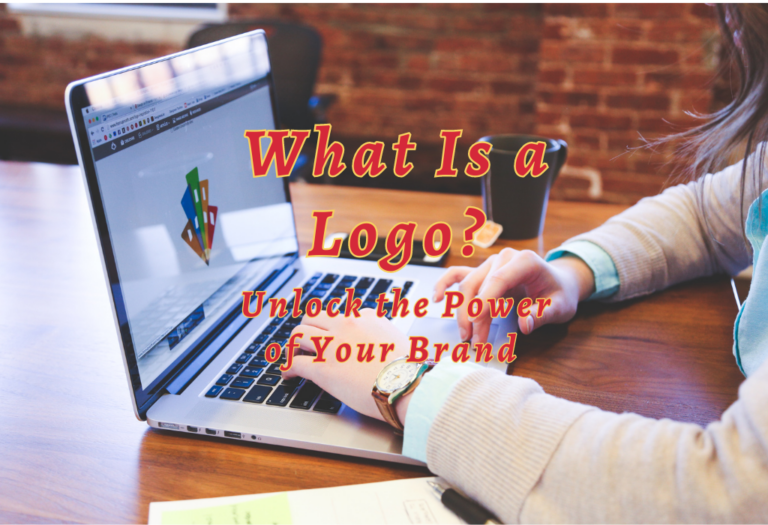Unlock the Power of Brand Identity: What It Is and How to Create It
Creating a strong brand identity is essential for any business looking to build trust, recognition, and loyalty among its customers. A well-developed brand identity helps your company stand out while communicating what makes it unique. But how do you create an effective brand identity that resonates with consumers?
This blog post will explore branding, why it’s important, and how professional designers can help bring your vision to life. We’ll also discuss tips on designing your brand identity and potential challenges you may face along the way. By understanding the importance of developing a powerful and cohesive message through design elements such as colors, logos, and typography – businesses will be able to elevate their brands to win with style, elevation, and cultural relevance.

What is Brand Identity?
Brand identity is a brand’s visual representation, including its logo, colors, typography, and other elements that make up its overall look and feel. It’s how customers recognize and remember a brand. A strong brand identity can help businesses stand out from their competitors in the marketplace.
Strong Brand Identity Examples
Strong Brand Identity Examples:
Hustle & Hope

Hustle & Hope is a brand that positions its products as more than greeting cards. Their stationery and cards tackle more difficult topics, such as job hunting and personal development. By pairing simple inspirational messaging with a code on the back of the card that leads to digital content and tips, the cards are meant to “level up” the recipient somehow. Founder Ashley Sutton always wanted to start a stationery company. Still, after a career working in some of the top Fortune 500 companies, she became passionate about empowering people to be their best professional selves. Her brand identity reflects this concept through its bold colors, uplifting messages, and unique codes for extra support.
Coca-Cola

Coca-Cola’s brand identity consists of several elements, including its iconic logo design featuring red script lettering on white background; its polar bear mascot; its color scheme (red); “Share A Coke” campaign; ribbon-like imagery featured on cans; and other visual cues like product packaging designs or slogans used over time. Combining these elements creates an instantly recognizable image associated with this beverage giant that has become synonymous with refreshments worldwide.
POP Fit Clothing

POP Fit Clothing has built an impressive brand identity based on representation, inclusivity, body positivity, and size range from XXS to 4XL signature fabric with four-way stretch technology all combined into one package. Their bright pinks and purple yellows make them stand out amongst competitors while ensuring they remain true to their mission statement, which can be seen across all aspects of their branding, from website copywriting to social media posts.
Brand Identity Vs. Brand Image
Brand Identity
Brand identity is the set of visual elements that represent a brand to its consumers. It includes logos, designs, colors, and messages crafted by a business team to create an image in customers’ minds. This image should be consistent across all company marketing materials and platforms. Examples include Apple’s iconic logo and Nike’s “Just Do It” slogan.
Brand Image
On the other hand, brand image is what customers think about a particular brand after interacting with it. This perception can be positive or negative depending on how successfully the company’s team implements the branding strategy. For example, suppose a customer has had good experiences with McDonald’s products. In that case, they will likely have a positive opinion of this fast-food chain, while someone who had bad experiences might have an unfavorable view of it instead.
Why is Brand Identity Important?
It sets a business apart from its competitors and helps customers recognize it in an increasingly crowded marketplace. A strong brand identity can help build customer trust by conveying a consistent message across all channels. 81% of consumers must trust a brand to consider buying from it.
Creates emotional connection
Businesses need to have a well-defined brand identity because it creates an emotional connection between the customer and the product or service they buy. Customers want to feel like they know who they are doing business with and that their money is going toward something meaningful.
Stand out from the competition
Strong brand identity also helps companies stand out from their competition by creating unique visuals that make them easily identifiable in any market or industry. Consumers will be more likely to remember your business if you have distinct visuals associated with it, such as logos, slogans, color schemes, etc., which will ultimately lead to increased sales over time as people become familiar with your branding efforts.
Create something unique and memorable
Having a professional designer work on your brand identity can be extremely beneficial when trying to create something truly unique and memorable for your target audience. Professional designers understand how different elements come together to form one cohesive look so they can ensure everything works together harmoniously while still providing each element stands out on its merits. They also understand how certain colors evoke certain emotions, so they’ll be able to choose ones that best represent your company’s values while also appealing visually.
Brand Identity and Some Of Its Elements
Brand identity is a set of tools companies use to create and maintain their brand image. It includes various elements such as the company’s mission, value proposition, long-term goals, competitive position in the market, and relevance to target audiences. These elements form the foundation for a company’s message to customers.
A logo is the visual representation of a brand, one of the most important elements in creating a successful identity. It should be simple, memorable, and recognizable.
Colors are powerful tools for conveying emotion and meaning to an audience. A well-chosen color palette can help create an emotional connection with customers that will last long after seeing your branding materials.
Choosing the right font or typeface can make all the difference in communicating your message effectively and ensuring your brand stands out from competitors.
Images have become increasingly important in today’s digital world as they help brands stand out visually while also helping them communicate their messages more clearly than words alone could do so
The tone and voice used by a company reflect its personality; this is how customers get to know who you are as a business, which helps build trust between you and them over time.
A tagline or slogan is usually just one sentence. Still, it’s an incredibly powerful tool for communicating what makes your business unique in just a few words—it should be short yet impactful.
Content strategy involves planning how content will be created, managed, delivered, and optimized across different channels such as websites or social media platforms; storytelling allows businesses to connect with their audiences on an emotional level while simultaneously building relationships with them through shared experiences.
How to Create a Strong Brand Identity?
Understanding your target audience and what they are looking for in your product or service is important before you start designing branding elements. Knowing who you are targeting and what message you want to communicate through your branding will help guide the design process.
89% of marketing experts believe branding is the most important and critical goal. An additional 85% is devoted to sales. Even though brand awareness remains the primary goal, branding statistics show that lead generation is important to 80% of marketers.
The name selection process is one of the most important steps when creating a new brand identity, as it will be associated with every product or service offered by your company from now on, so you must choose wisely. When selecting names for your business, make sure that they are easy to remember and pronounce since these two factors play an important role in making them memorable for potential customers. Additionally, avoid words that could potentially carry negative connotations, as this could lead to confusion among consumers regarding what type of services you offer or, even worse – damage your reputation before you even get started.
craft a mission statement that reflects your company’s core values, as this will be used as a foundation when creating all other branding elements. Your mission statement should be concise yet powerful, conveying what makes your company unique and why customers should choose it over competitors.
Once you have established a clear mission statement, begin thinking about how best to represent it visually with logos, colors, fonts, imagery, and more. 55% of brand first impressions are visual.
Challenges When Creating Your Brand Identity
It requires careful consideration of all the elements that make up your brand, such as logo design, color palette, typography, and messaging. All these components must work together to create an effective visual representation of your company’s values and mission.
Finding the right balance between communication
One challenge when creating a brand identity is finding the right balance between communicating what makes your business unique and appealing to potential customers who may need to be more familiar with your product or service. You want to stand out from competitors in the marketplace but also need to ensure that you are relatable enough for people to connect with it on an emotional level. This means carefully considering how each element works together cohesively to create a unified message about who you are as a company and what sets you apart from others in the industry.
Staying consistent
Another challenge when creating a brand identity is staying consistent across different platforms and mediums. Your logo should look recognizable no matter where it appears – whether on social media, print materials, or even digital ads – so that customers can easily identify your company wherever they see it.
Additionally, all other aspects of branding, such as colors, fonts, and imagery, should remain consistent throughout every touch point to create an overall cohesive experience for customers regardless of which platform they use or encounter first.
Making sure everything looks professional
Finally, one more challenge when developing a successful brand identity is ensuring everything looks professional without being too generic or bland. You want something that stands out from competitors but looks polished enough for potential clients or investors to take notice of your business’ offerings at first glance. Professional designers can help by providing creative direction while ensuring all visuals meet high-quality standards before launching them to the public through various marketing channels like websites or social media accounts.
How Can Professional Designers Help With Your Brand Identity?
Professional designers can help ensure that all aspects of your branding come together cohesively while being unique enough to stand out from competitors.
They have extensive knowledge
Graphic design principles such as color theory, typography selection, and layout are key elements of creating an effective brand identity. The color theory involves selecting colors that evoke certain emotions or feelings when viewed by customers, while typography selection refers to choosing fonts that reflect your company’s personality. The layout includes how images and text are arranged on a page or website, which helps create visual interest and draw attention to important information about your product or service. Professional designers have extensive knowledge in these areas. They can provide valuable feedback on communicating what makes your business unique while still appealing to potential customers who may need to become familiar with it.
They understand the importance of consistency
In addition, professional designers understand the importance of consistency across different mediums like print materials, websites, social media accounts, etc., so they can ensure each element ties into one another seamlessly without compromising its originality. They also know how important it is for businesses today to have a recognizable logo, something people will remember even if they only see it once – this could be achieved through careful use of shapes and colors along with creative font choices tailored specifically for you.
They understand trends
Professional designers also understand trends within their industry, allowing them to create both timeless and modern designs – this ensures longevity for brands and stays up-to-date with current market demands. Furthermore, they’re able to develop custom illustrations and graphics, further enhancing the uniqueness of a brand’s identity compared to competitors who might use stock imagery instead.
Gives businesses more control over branding
Finally, having access to experienced professionals gives businesses more control over their branding process since they’ll be able to get real-time feedback throughout every step until completion. This way, there won’t be any surprises after launch day arrives.
With all these benefits combined, companies should consider investing in professional design services if they want their brand identities created correctly from start to finish – no matter what size budget you may have available.
FAQ About What is Brand Identity
Conclusion
It helps you stand out from the competition, build customer trust, and create an emotional connection with your audience. With professional design help, you can ensure that your brand identity accurately reflects who you are and what you do. By developing a unique brand identity, businesses can gain recognition in their industry and increase customer loyalty. A strong brand identity will give your business the edge it needs to succeed in today’s competitive market.
At brandbuddee, a branding agency, we believe that brand identity is the cornerstone of any successful business. Our team specializes in helping companies create powerful brands with a unique voice and purpose that resonates with their target audience. We understand how to craft stories, build relationships, tell engaging visuals, and design meaningful customer experiences, allowing your company to stand out from competitors. Let us help you elevate your brand’s identity so it can have an impact on today’s marketplace!






